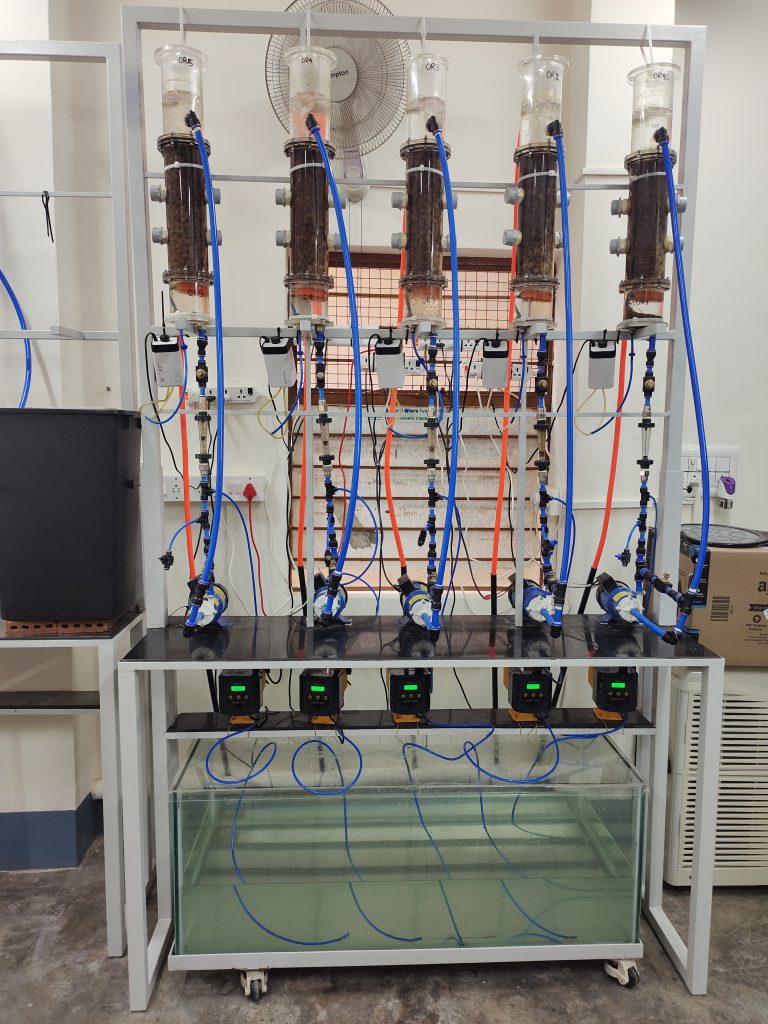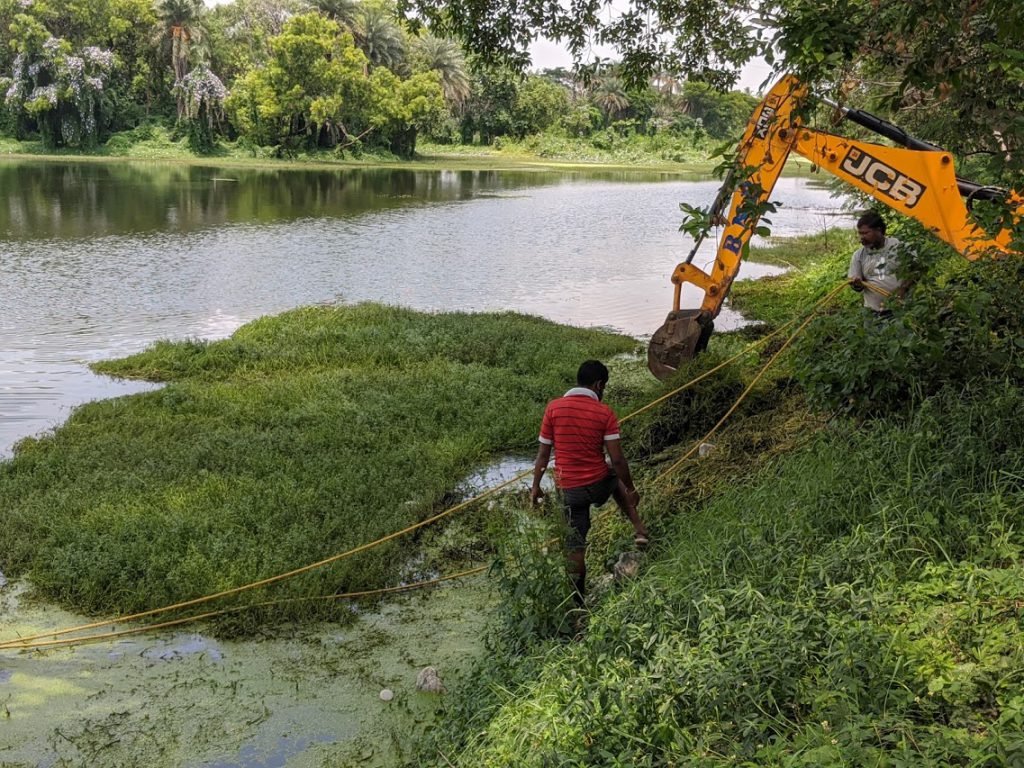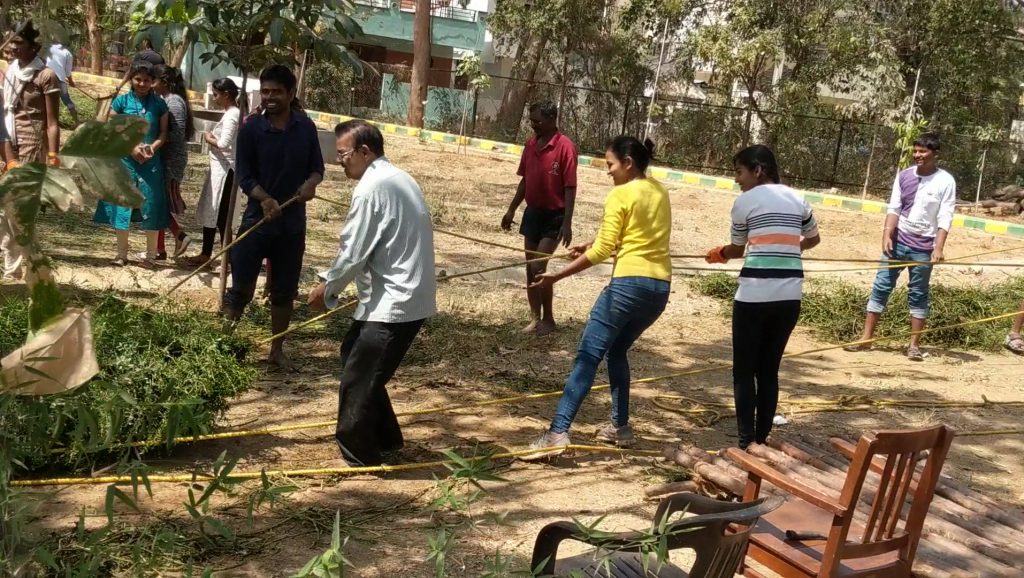What it takes to recycle sewage and rejuvenate the city’s lakes

In 1993, when I first visited Bangalore, it felt like a different country to me. I was coming from dry and hot Nagpur, where the sky fades to almost white in summer, and the colour of the Gulmohar flowers is yellowish orange. Here, the trees seemed larger and greener, the Gulmohar blossoms flaming red, and the many water bodies inside city limits gave it a fantastical feel. I returned to Bangalore in 2014 for work. Many of the old landmarks were gone. Bulky flyovers shrunk the skies to narrow strips, and the traffic was unbearable. But the lakes were still there. In fact, I passed three of them every day on my way to work.
I was soon to find out that all wasn’t as it seemed since my last visit. Between 1993 and 2014, several of the lakes had been destroyed in an attempt to accommodate the city’s growing population. The water in others was contaminated with untreated sewage, and had become unsuitable to support life. Researchers, including those at IISc, have been reporting on these ‘decaying lakes’ for years. But little seems to have improved.
Lakes, cities and urbanisation
According to the records of the Bangalore Water Supply and Sewerage Board (BWSSB), most of the lakes in Bangalore are not fed by natural streams. The oldest among them were constructed during the 16th century to capture rainwater. This was the need of the hour for a growing and land-locked city without any river. These lakes, or ‘kere’ in Kannada, took care of the water requirement for drinking, irrigation and fishing. Yet, because of the topography of the city, they also accumulated wastewater from the surrounding localities. When the population was still small, this didn’t pose a big problem.
Most ancient cities were built along rivers. Rivers carried away their refuse, diluting it along the way. Ruins of cities of the Indus Valley Civilisation, like Harappa and Dholavira, have elaborate, thoughtfully-designed networks of water and wastewater channels. Remains of terracotta pipes, storage tanks and baths suggest that water was brought in from the nearby rivers and moved around the city using natural slopes. The used water was then taken out, back to the waterbody downstream. Initially, with smaller populations and larger distances between cities along their banks, rivers acted as natural sewer systems. Waste from one city settled down, got filtered through sand-beds, and water was clean when it reached the next.
In modern times, as cities swell under the pressures of urbanisation, spaces separating them are beginning to vanish. Garbage is piling up on roadsides at an alarming rate, attracting disease, emanating foul smell and giving rise to ugliness. Overuse of water has pushed the groundwater levels deeper. Water requirement has increased enormously, and humans are learning the hard way that it is not an unlimited commodity; that water, once used, needs to be purified before recycling it or returning it to the environment. Land-locked cities like Bangalore are already importing large quantities of water from Mysore, and producing just as much sewage.
Treating sewage: the process
‘Sewage’ is the term used collectively for wastewater from households (mixed with food particles, cleaning products, urine and faeces) and industries (mixed with chemical waste), with hospitals, schools and residential areas also contributing to it.
Sewage is passed through several levels of treatment. Solids that can be filtered or sedimented are removed first (primary level), and what remains is ‘sludge’. Dissolved organic compounds from the sludge are decomposed next, with the help of microorganisms in the presence of oxygen (secondary). More complex techniques are needed to remove nitrates and phosphorus (tertiary). The removal of compounds that use up oxygen present in water or removal of Biochemical Oxygen Demand (BOD) is necessary to make water life-sustaining. The goal is to have water that looks and smells clean, is devoid of pathogens, and has enough dissolved oxygen to support a healthy ecosystem.
Giving value to sewage
IISc’s contributions to wastewater treatment and recycling commenced in 1916 with the arrival of sanitary chemist Gilbert Fowler, who was appointed the head of the Department of Applied Chemistry. He had a unique perspective on the sewage treatment process. HN Chanakya, a former Chief Research Scientist at the Centre for Sustainable Technologies (CST), says, “When he came to India, Fowler was interested in utilising waste. That was a paradigm shift. In those days, waste was something to be gotten rid of. And unless you treat waste, give it value, there is no point in bringing it back into circulation.”
Fowler had helped develop the Activated Sludge Process (ASP), a method most prevalent then as it is now, even before he landed in India. It needed air to be forced through filtered raw sewage for days, allowing existing oxygen-loving microbes to digest the organic matter. The sewage thus treated was then allowed to stand, and cleaner water was separated. During a visit to the USA, Fowler realised that the success of this process depended upon the presence of the ‘correct’ type of bacteria. He showed that adding some of the old sludge to the new batch of sewage sped up the process and made it more effective. He also showed that treated sewage became rich in nitrates and could be used in agriculture. His work was in great demand all over the country and the world, as outlined in IISc’s 1916-17 Annual Report.
Gilbert Fowler showed that adding some of the old sludge to the new batch of sewage sped up the process and made it more effective
Fowler became the first Chair of the Department of Biochemistry in 1921, and built an activated sludge plant to deal with the sewage on the IISc campus. After his retirement, V Subrahmanyan and SC Pillai, both professors in the department, also made notable contributions to sewage research. In the early 1940s, they published several papers showing unambiguously that more than bacteria, single-cell organisms like Vorticella and Epistylis were responsible for purifying sewage in ASP. They created large aggregates or ‘flocs’ that trapped contaminants and separated them from wastewater.
Going beyond conventional clean-up
More than a century since Fowler’s time, researchers at IISc have continued to work on treating wastewater. One of them, Lakshminarayana Rao, Associate Professor at CST, is using a new approach: bringing lightning into the lab.
When lightning strikes in nature, the air in its path becomes plasma, a state of matter much more reactive than any gas. And when lightning strikes water, the composition of water changes. This plasma activated water (PAW) has several applications in medicine and agriculture.
Rao describes the process of creating PAW as passing electricity between two electrodes, the anode being a metal and the cathode being water. “If you apply enough voltage, you have breakdown of the air, and you start having a small arc between the anode and the cathode. This arc, depending on how you operate it, can render the water below rich in certain compounds or elements like nitrogen.”
Although PAW can efficiently destroy pathogens in water, it has not yet been used for large-scale wastewater treatment. It is a niche, tertiary level of treatment, recommended for small-scale recycling units in apartments or isolated communities. It uses ozone gas for the creation of plasma. Rao says, “Our lab builds ozonators that generate ozone directly from air. This is a highly oxidising chemical, and when you bubble it through secondary treated water, it disinfects it – makes it free of pathogens, colour and odour. Such water can be used for gardening or cleaning purposes.” Rao’s team has already installed plants using this technology in some schools and apartment complexes, and his goal is to expand it to the village level.
Another young scientist preparing to work on tertiary level sewage treatment is Sreenivasan Ramaswami, a newly joined Assistant Professor at CST, who has named his research group ‘SusPaani’. A chemical engineer, Sreenivasan believes that several of the challenges in removing the pollutants from water need sustainable biological solutions.
“Micropollutants – also called emerging contaminants – are a group of compounds that remain in wastewater that has already gone through the conventional treatment processes,” he explains. “They do not degrade in the conventional activated sludge process, and thus end up in the receiving water bodies.” These are organic, non-biodegradable compounds that come from our medicines, personal care products, and household and industrial chemicals. If – or when – these compounds reach water bodies, they can have disastrous effects on aquatic and other higher organisms.

“They can be mutagenic to aquatic organisms. There are studies that found male fishes becoming female, fish having problems with their eggs, neural development and so on. To protect the environment, we must treat the wastewater further,” he adds. “Internationally, researchers are trying to degrade them or remove them by physico-chemical methods. I want to solve this biologically, which I think will be more economical and efficient.” Sreenivasan is planning to work on enhanced biological degradation of organic micropollutants using biofilm reactor systems.
Reviving Kolar valley
The wastewater-related work that IISc researchers are doing is more than merely academic. Rao and Chanakya have also been working with government authorities in maintaining the keres, designing and installing Sewage Treatment Plants (STPs), and planning the replenishment of water bodies in Bangalore and areas surrounding it.
“Bangalore receives close to 1,440 million litres per day (MLD) of freshwater from the Cauvery, which is in Mysore,” Rao explains. “Together with borewells, Bangalore consumes about 1,800 MLD of water. Out of this, 80% gets collected and treated, and 20% is lost. In all, the city generates 1,500-1,450 MLD of sewage daily.”
Rao is part of a team of IISc professors that advises, provides technical support, and monitors sewage treatment and recycling schemes undertaken by the Government of Karnataka. He talks about the KC Valley project, considered one of the success stories. It started in 2018 with an aim to help Kolar, a city 70 km to the east of Bangalore. Kolar had suffered from drought for almost a decade, and its keres were completely dry. The idea was to pump treated wastewater from Bangalore’s STPs up to higher elevations near Kolar and release it there. The water would then flow through natural terrain, getting cleaner as it flowed, and drain into the keres in Kolar. “The scale of the project was 440 MLD, almost one-third of Bangalore’s wastewater production, and it filled 137 tanks in Kolar.”
When the project went through certain legal troubles, Rao and others made a presentation to the Supreme Court explaining the scientific merits of the project, and demonstrating that the water reaching the keres in Kolar was safe to use in agriculture and industry for purposes other than drinking. Rao adds that the project has made a huge difference in just four years. “The underground water tables have risen up from 1,800 feet to less than 100 feet! Huge improvements are seen in agriculture, and the rural economy is on the way to revival. Milk and flower production have gone up. People who were doing meagre jobs in Bangalore have gone back to Kolar.”
Bringing birds back
Keres in Bangalore too need help, and smaller STPs have been set up to clean the incoming sewage and replenish lakes like the Yelahanka-Puttenahalli kere.
“Like most tanks of Karnataka, the Yelahanka- Puttenahalli lake is fed with run-off, and at just about 2 m deep, much of the water evaporates, and the lake used to dry up by January-February [every year], often leaving only a tiny pool of water for water-birds,” says Chanakya.
Once a safe haven for many species of birds, the kere was engulfed by the growing city in the first decade of the century. It began receiving untreated domestic and industrial sewage around 2013, resulting in severe eutrophication – heavy growth of aquatic plants because of progressive accumulation of nutrients, particularly nitrogen and phosphorus. This disproportionate amount of nutrients resulted in the rapid growth of algae and aquatic plants, choking the ecosystem. Biodiversity decreased, and the overgrown algal layer reduced the amount of sunlight and oxygen penetrating the surface of water. The number of bird species reduced drastically as their nesting area became uninhabitable.
Residents of the area, working with the Lake and Bird Conservation trust, requested researchers like Chanakya to help find a solution. The lake had not seen much fresh rain water in previous years, and was basically full of sewage and weeds. Chanakya and his team studied the experiences of other lake restorers before making a plan to rejuvenate the ecosystem in and around the kere.
Chanakya and his team studied the experiences of other lake restorers before making a plan to rejuvenate the ecosystem in and around the kere
There were three aspects to the project: removing the weeds that choked the lake, ensuring a constant supply of clean water all through the year, and creating adequate living conditions for organisms at all stages of the food-web – from algae at the bottom of the web to the birds at the top. Chanakya explains, “[We wanted] to make this lake suitable for three types of water birds – waders, swimmers and divers – and two types of nesting birds – local and migratory. We needed a different geometry of the lake compared to [what was done in] previous lake restorations where the lakes were restored to a uniform water depth of 2 m or more.” They decided to establish a gradually sloping bottom for the lake, which would create habitats for different varieties of fish that would feed on a gamut of algae and zooplanktons.

To keep the water quality clean, the Chanakya’s CST team designed and helped the Karnataka Forest Department (KFD) in setting up a Passive Sewage Water Treatment (PSWT) plant at the deep end of the lake. Almost 1 MLD sewage diverted from the city was passed through this system. The treatment was at three levels, using different types of biological reactors, till more than 95% organic matter and 80% of nitrogen and phosphorus were removed. It was also decided that only as much sewage would be drawn into the lake as the amount of water evaporated during the day. This ensured that the kere didn’t dry out in summer, and could accommodate rainwater during the monsoons. Seema Sukhani, one of Chanakya’s graduate students, was deeply involved with this project. In a speech during the 2022 Kere Habba, she mentions that she felt as if she grew up with the lake. Her commitment is also acknowledged by Chanakya when he remembers how she used to leave her hostel at 5 am to go collect water samples from Yelahanka for analysis.

This restoration project required a lot of person hours, and Chanakya remembers the huge contribution made by the residents and youngsters in the community as well as his own students. Employees of KFD also pitched in during the pandemic, when the residents could not participate. This was a true collaboration between the scientists, the governing body and the citizens, says Seema in her speech. And the fruit of their labour? Birds have now started returning to this kere for the first time in years.




